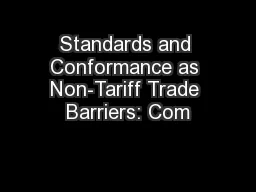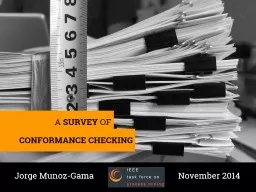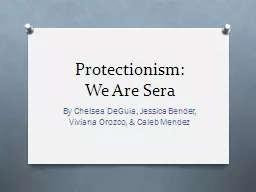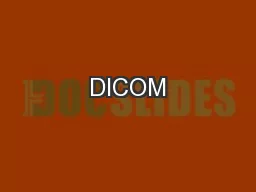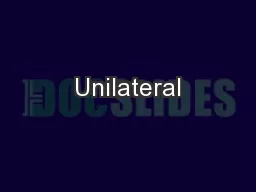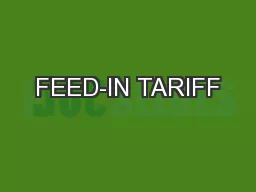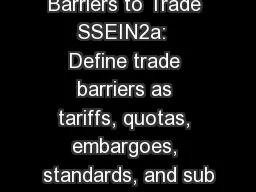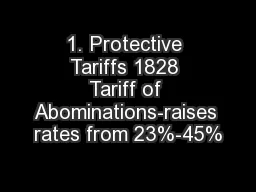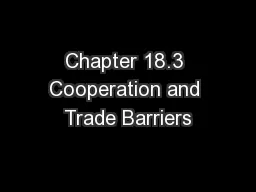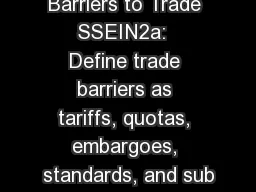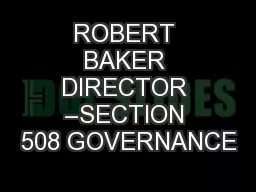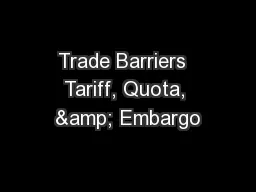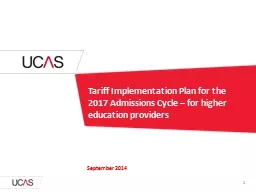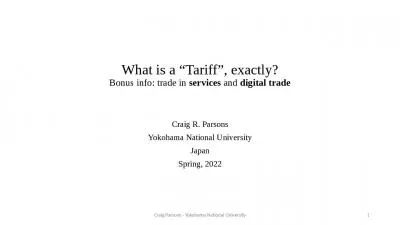PPT-Standards and Conformance as Non-Tariff Trade Barriers: Com
Author : natalia-silvester | Published Date : 2018-01-10
ITA Standards Liaisons Office US Department of Commerce wwwtradegovstandards Introduction Commerce Standards Initiative 2 6 Years since the launch of the Commerce
Presentation Embed Code
Download Presentation
Download Presentation The PPT/PDF document "Standards and Conformance as Non-Tariff ..." is the property of its rightful owner. Permission is granted to download and print the materials on this website for personal, non-commercial use only, and to display it on your personal computer provided you do not modify the materials and that you retain all copyright notices contained in the materials. By downloading content from our website, you accept the terms of this agreement.
Standards and Conformance as Non-Tariff Trade Barriers: Com: Transcript
Download Rules Of Document
"Standards and Conformance as Non-Tariff Trade Barriers: Com"The content belongs to its owner. You may download and print it for personal use, without modification, and keep all copyright notices. By downloading, you agree to these terms.
Related Documents

